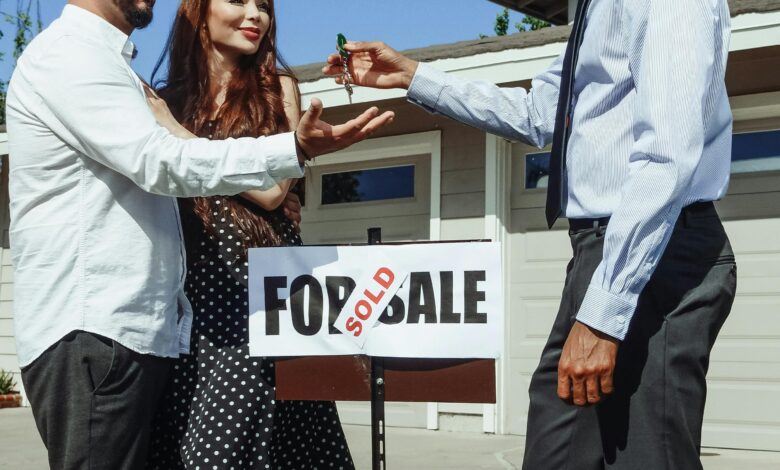The Best Ways to Price Your Home for Sale

Pricing your home correctly is one of the most critical steps in the selling process. An accurate price ensures that your property attracts potential buyers, sells quickly, and fetches the best possible return on your investment. Overpricing can deter buyers and lead to a stagnant listing, while underpricing may result in leaving money on the table. In this article, we’ll explore the best strategies for pricing your home effectively, including market research, professional appraisals, and psychological pricing techniques.
1. Understand the Importance of Pricing
The price you set for your home serves as the first impression for buyers. It determines whether your property stands out in the market or gets overlooked. A well-priced home generates interest, encourages showings, and often leads to competitive offers.
Key Considerations:
- Market Conditions : Is it a buyer’s market (favoring buyers) or a seller’s market (favoring sellers)?
- Location : Homes in desirable neighborhoods or school districts typically command higher prices.
- Timing : Seasonal trends can influence demand and pricing.
Understanding these factors will help you make informed decisions about your home’s value.
2. Conduct a Comparative Market Analysis (CMA)
A Comparative Market Analysis (CMA) is a detailed report comparing your home to similar properties (comps) that have recently sold or are currently listed in your area. This is one of the most reliable methods for determining your home’s value.
Steps to Perform a CMA:
- Identify Comparable Properties : Look for homes with similar square footage, bedrooms, bathrooms, and features.
- Analyze Recent Sales : Focus on homes sold within the past three to six months.
- Consider Active Listings : Compare your home to other properties currently on the market.
- Adjust for Differences : Account for upgrades, condition, and unique features that differentiate your home.
You can request a CMA from a real estate agent or use online tools like Zillow or Redfin to gather data.
3. Hire a Professional Appraiser
A professional appraisal provides an unbiased estimate of your home’s value based on its condition, location, and comparable sales. While appraisals typically cost between $300 and $600, they offer valuable insights, especially in uncertain markets.
Benefits of an Appraisal:
- Objective Valuation : Removes emotional attachment from the pricing process.
- Lender Confidence : Helps buyers secure financing by providing an official valuation.
- Negotiation Power : Gives you leverage during price negotiations with buyers.
If you’re unsure about your home’s worth, an appraisal can provide clarity and credibility.
4. Work with a Real Estate Agent
Experienced real estate agents bring local market knowledge and expertise to the pricing process. They understand buyer behavior, seasonal trends, and pricing strategies that maximize your home’s appeal.
How Agents Help:
- Access to MLS Data : Agents have access to comprehensive Multiple Listing Service (MLS) data not available to the public.
- Pricing Strategy : They can recommend a competitive price range based on current market conditions.
- Marketing Expertise : Agents know how to position your home to attract the right buyers.
Choose an agent with a proven track record in your area for the best results.
5. Use Online Valuation Tools
Online valuation tools, such as Zillow’s Zestimate or Realtor.com’s Home Value Estimator, provide quick estimates of your home’s value. While convenient, these tools rely on algorithms and may not account for unique features or recent renovations.
Pros and Cons:
- Pros :
- Free and easy to use.
- Provides a general idea of your home’s value.
- Cons :
- May lack accuracy due to limited data.
- Doesn’t consider subjective factors like curb appeal or staging.
Use online tools as a starting point, but don’t rely solely on them for pricing.
6. Factor in Your Home’s Unique Features
Every home has distinguishing characteristics that can impact its value. Highlighting these features can justify a higher price and attract buyers willing to pay a premium.
Examples of Unique Features:
- Upgrades : New appliances, energy-efficient windows, or a remodeled kitchen.
- Outdoor Space : Landscaped yards, pools, or outdoor kitchens.
- Location : Proximity to schools, parks, or public transportation.
- Condition : Well-maintained homes with minimal repairs needed.
Emphasize these selling points when marketing your home.
7. Consider Psychological Pricing Techniques
Psychological pricing involves setting a price that feels appealing to buyers. For example, listing your home at $499,000 instead of $500,000 can create the perception of a better deal.
Tips for Psychological Pricing:
- Round Down : Use numbers ending in 9 or 99 to make the price seem lower.
- Avoid Odd Numbers : Prices like $487,000 may appear arbitrary and unprofessional.
- Align with Buyer Expectations : Research what buyers in your area expect to pay for similar homes.
While psychological pricing won’t compensate for overvaluation, it can make your listing more attractive.
8. Be Mindful of Market Trends
Real estate markets fluctuate based on economic conditions, interest rates, and supply and demand. Staying informed about current trends ensures your pricing strategy aligns with market realities.
Signs of a Seller’s Market:
- High demand and low inventory.
- Homes sell quickly, often above asking price.
- Multiple offers are common.
Signs of a Buyer’s Market:
- Low demand and high inventory.
- Homes stay on the market longer.
- Buyers negotiate aggressively.
Adjust your pricing strategy accordingly to remain competitive.
9. Stage and Prepare Your Home
Even if your home is priced competitively, its condition plays a significant role in attracting buyers. Staging and preparing your home can enhance its perceived value and justify a higher price.
Preparation Tips:
- Declutter : Remove personal items and excess furniture to make spaces feel larger.
- Deep Clean : Ensure every room is spotless and odor-free.
- Make Repairs : Fix leaky faucets, cracked tiles, or peeling paint.
- Curb Appeal : Enhance the exterior with fresh landscaping and a welcoming entryway.
A well-prepared home creates a positive impression and supports your asking price.
10. Test the Market with Strategic Pricing
Once you’ve determined a competitive price, consider testing the market to gauge buyer interest.
Strategies:
- Start Slightly Higher : If you’re confident in your home’s appeal, list it slightly above market value to leave room for negotiation.
- Monitor Interest : Track showings, inquiries, and feedback from potential buyers.
- Adjust if Necessary : If there’s little interest after a few weeks, consider lowering the price.
Flexibility and responsiveness are key to finding the right price.


